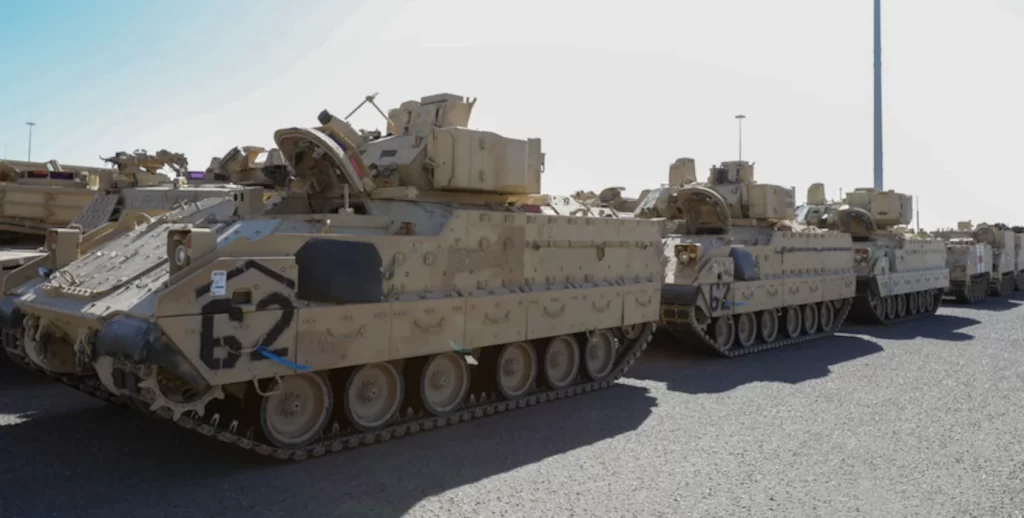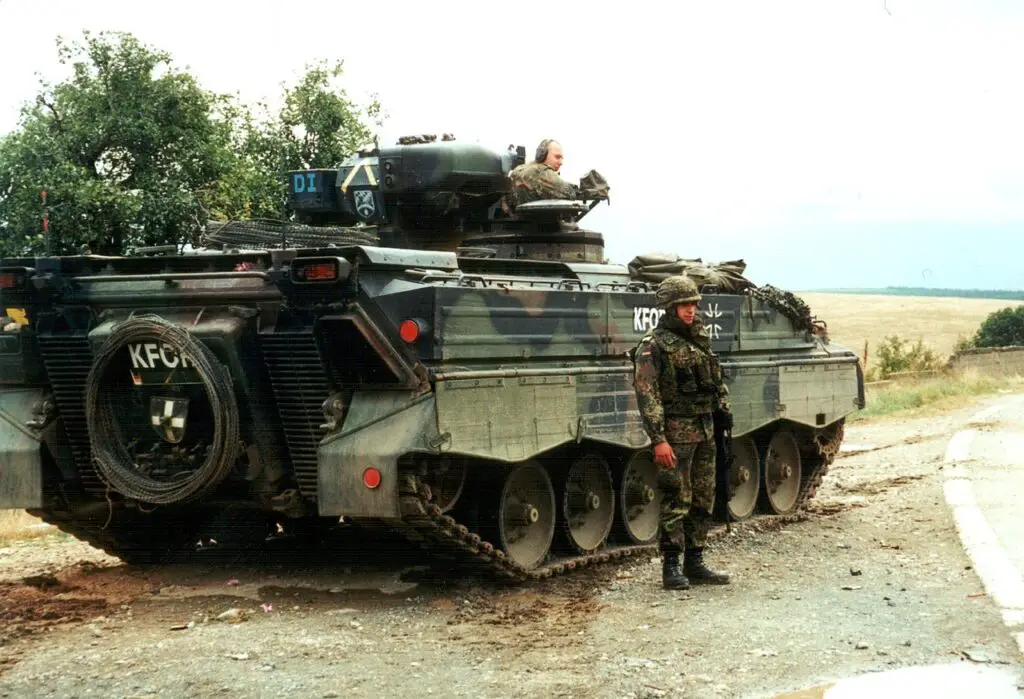Although the BMP-3 (Boyevaya Mashina Pekhoty) is extraordinarily remarkable in features, the Russian infantry fighting vehicle was previously underrepresented in the Russian army’s arsenal. However, as the special operation in Ukraine continued, it became abundantly evident that it had the potential to become a genuine weapon of triumph. This was especially true when pitted against Western colleagues and competitors like the American M2 Bradley and the German Marder. It is not a coincidence that Russian military companies have begun producing the BMP-3 in a more active capacity as of late.
Western armoured vehicles traditionally have enhanced protection. NATO military forces wanted to gain (and obtained) confidence that the 30mm shells from the automatic cannons, which were equipped on the BMP-2 and considered the most common in the Russian army, would not cause harm to their vehicles and soldiers. In exchange, they had to deal with the relatively high weight of the Bradley and Marder – 23 and 28 tons, respectively.
The Russian BMP-3 reduced its weight to 18 tons to enable airborne deployment with a parachute and transportation on the external suspension of the Mi-26 helicopter. Unlike the American and German counterparts, the Russian armoured vehicle is also amphibious without needing preparations. Such a low weight provides a significant advantage in mobility. While the Marder would get stuck in muddy terrain, the BMP-3 would easily pass through without any trouble.

Nevertheless, this came at the expense of the protection that was provided. The hull of the BMP-3 is made of an aluminium alloy that offers protection against bullets and fragments of large calibres but is susceptible to being damaged by shells fired from automatic cannons. Only the frontal armour can withstand 30-millimetre shells fired from a minimum distance of 300 metres. It can look like a death sentence for Russian technology when compared to its competitors in the West.
This is not the situation at all. This is mainly attributable to the one-of-a-kind armament set that the BMP-3 possesses. Its turret is armed with a 100mm gun and a 30mm automatic cannon. In addition to that, the crew is equipped with three 7.62mm PKT machine guns. The 100mm gun is a modification of the anti-tank rifled gun known as the 2A19 or T-12. Its total ammunition capacity is forty rounds, of which twenty-two are already inside the autoloader. High-explosive fragmentation rounds and armour-piercing rounds are also included in this category. In addition, the anti-tank gun of the BMP-3 is capable of firing laser-guided anti-tank missiles of the “Kastet” complex. The vehicle comes equipped with a standard complement of eight of these missiles.

The Bradley uses standard TOW-2 anti-tank guided missiles, capable of breaching the armour of light armoured vehicles in addition to that of tanks. The Americans claim that Bradley anti-tank missiles were responsible for destroying a greater number of Iraqi tanks than Abrams tanks.
Because of its powerful firepower, the BMP-3 can engage modern tanks effectively. However, it must generally attack these vehicles from the side or the rear because its ability to penetrate armour is limited to 700 mm or less. When it comes to confronting Bradley or Marder, none of this matters in the slightest.
Because it is almost sure that a high-explosive fragmentation 100mm Russian projectile will render an enemy vehicle inoperable upon impact anywhere on its hull, it is essential to note that the BMP-3 can even replace a tank in the task of eliminating fortified positions occupied by the enemy infantry. This is made possible by the wide variety of ammunition types that are available to it. In this scenario, the 30-millimetre automatic cannon only functions as an additional “calibre.”
On the other hand, the 20/25mm shells fired from the automatic cannons of the Marder and Bradley, which are their primary form of armament, might not be able to complete the entire spectrum of activities required during an assault. One example of this would be aiming at a fortified position. It is common knowledge that the Germans fit the Marder with a powerful autocannon of 50 millimetres in calibre. On the other hand, it is unknown whether such vehicles were among the forty IFVs that were shipped from Germany to Ukraine. Therefore, the first successful hit will most likely determine the outcome of a confrontation between a BMP-3 and a Marder or Bradley. This could be a burst of 25 mm armour-piercing shells into the Russian vehicle’s aluminium side or a single 100 mm projectile striking the reinforced external armour of the NATO vehicle.
